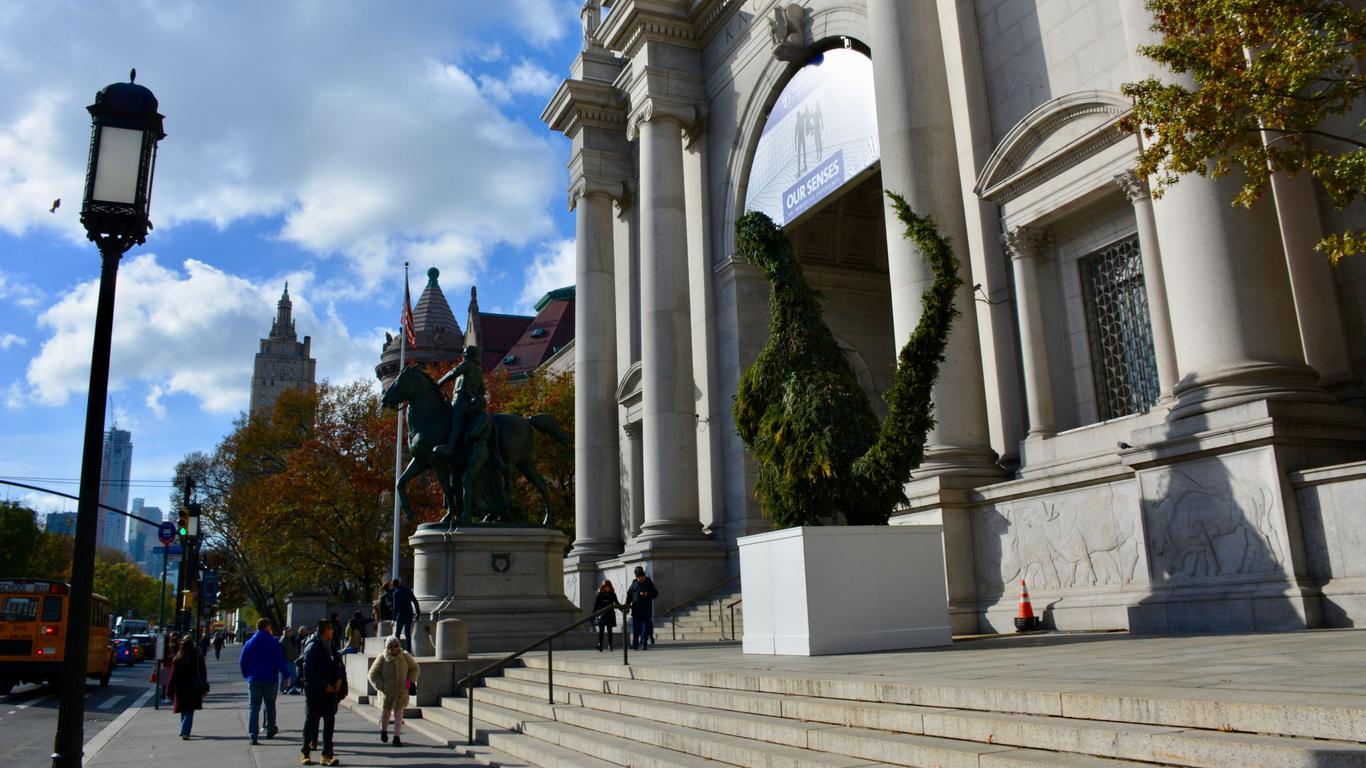The American Museum of Natural History is a natural history museum in the centre of New York City, and it is the largest of its kind in the world. Over a space of 190,000 metres squared, the collection contains 33 million specimens in the 45 exhibition rooms, although only some of these can be on display at one time. The founders established AMNH in 1869 with a timeless mission to discover and study everything there is to know about the human culture, the natural world and the wider universe.
The museum exhibits a range of plants, animals, rocks, remains, artefacts and fossils, from giant dinosaur bones, including a Tyrannosaurus Rex skeleton, to small yet infinitely valuable gemstones. Other key features include the Rose Centre planetarium, educating about earth and space with the newest technology, Fossil Halls filled with ancient remains, and the Butterfly Conservatory, open from September to May with over 500 flying butterflies inside. In the Milstein Hall of Ocean Life, visitors will find a 29-metre long blue whale replica suspended from the roof and in the Grand Gallery, they can see a large canoe of British Columbian First Nations creation. The museum is also actively involved in modern science, and the Hall of Biodiversity educates visitors about the need to preserve the Earth and tackle climate change.
Standing opposite Central Park in New York, the museum has many entrances, with the main one being on Central Park West. Lines B and C of the subway go to the nearby station of 81st Street. Alternatively, visitors can take one of the many buses that stop next to the Museum on West 81st Street, or they can drive into the city and park in the museum car park during the day.
There are many founders of the museum, including the father of President Theodore Roosevelt, but the original vision came from Dr Albert S. Bickmore, who proposed the idea for years until officials finally accepted it in 1869. Construction of the original building finished in 1877, however, many extensions were added since then, and various architectural styles have developed upon the original Victorian Gothic design. As the collection inside has grown, the museum has adapted to host it, retaining the history and beauty of his initial construction, yet adjusting to modern technology.





